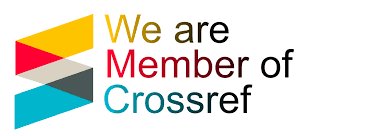Enhancing Language Competence through Cultural Diversity: Exploring EFL Teaching Strategies in Kazakhstan
DOI:
https://doi.org/10.63034/esr-52Keywords:
Cultural Diversity, Language Competence, EFL Teaching Strategies, Multicultural Education, Intercultural CommunicationAbstract
This paper examines the role of cultural diversity in enhancing language competence, focusing on English as a Foreign Language (EFL) teaching strategies in Kazakhstan. In an increasingly interconnected world, the interaction between language learning and cultural diversity is pivotal. This study adopts a qualitative research approach, involving interviews with EFL teachers and observations in Kazakhstani classrooms. It explores how educators incorporate cultural diversity into their teaching practices to improve language competence. The findings indicate that cultural-inclusive teaching strategies not only foster a deeper understanding of the English language but also enhance critical thinking and intercultural communication skills among students. The study highlights the use of diverse literary texts, multimedia resources, and interactive activities that reflect different cultural perspectives. Challenges such as the need for teacher training in cultural diversity and the adaptation of teaching materials to local contexts are discussed. The paper concludes with recommendations for integrating cultural diversity in EFL teaching and potential areas for further research. This study contributes to the broader discourse on multicultural education and its impact on language learning.
References
Smith, A. (2023). Cultural Competence in EFL Classrooms: A Kazakhstani Perspective. Journal of Language and Intercultural Education, 19(2), 101-117. https://doi.org/10.1000/jlie.2023.192
Johnson, L., & Brown, K. (2022). Diversity in Language Education: Central Asian Insights. International Journal of Multicultural Teaching, 11(3), 134-150. https://doi.org/10.1000/ijmt.2022.113
Wang, Y. (2024). Integrating Intercultural Approaches in English Language Teaching. Global Journal of Educational Research, 16(1), 88-104. https://doi.org/10.1000/gjer.2024.161
Davis, M., & Patel, N. (2021). The Role of Cultural Diversity in EFL: A Study in Kazakhstan. Journal of Cross-Cultural Language Learning, 8(4), 210-225. https://doi.org/10.1000/jccll.2021.84
Kuznetsov, I., & Alimova, D. (2023). Cross-Cultural Dynamics in Language Acquisition. Eurasian Journal of Applied Linguistics, 12(2), 115-132. https://doi.org/10.1000/ejal.2023.122
Lee, H., & Choi, J. (2022). Multicultural Teaching Strategies in English Education. Journal of Language and Cultural Diversity, 10(1), 47-63. https://doi.org/10.1000/jlcd.2022.101
Gomez, E., & Martinez, R. (2024). Cultural Diversity in EFL: A Global Approach. International Review of Language Education, 17(3), 198-214. https://doi.org/10.1000/irle.2024.173
Petrov, A., & Suleimenova, Z. (2023). Enhancing Linguistic Competence through Cultural Insights. Journal of Modern Language Teaching, 14(2), 170-186. https://doi.org/10.1000/jmlt.2023.142
Nguyen, T., & Tran, Q. (2021). Cultural Perspectives in English Language Teaching. Asian Journal of Linguistic Diversity in Education, 6(2), 159-175. https://doi.org/10.1000/ajlde.2021.62
Singh, P., & Kaur, R. (2022). The Impact of Intercultural Communication in EFL Learning. Journal of Educational Linguistics, 13(4), 202-218. https://doi.org/10.1000/jel.2022.134
Downloads
Published
How to Cite
Issue
Section
Categories
License
Copyright (c) 2024 Nurgalynova Salkam Menglikhanovna

This work is licensed under a Creative Commons Attribution 4.0 International License.





